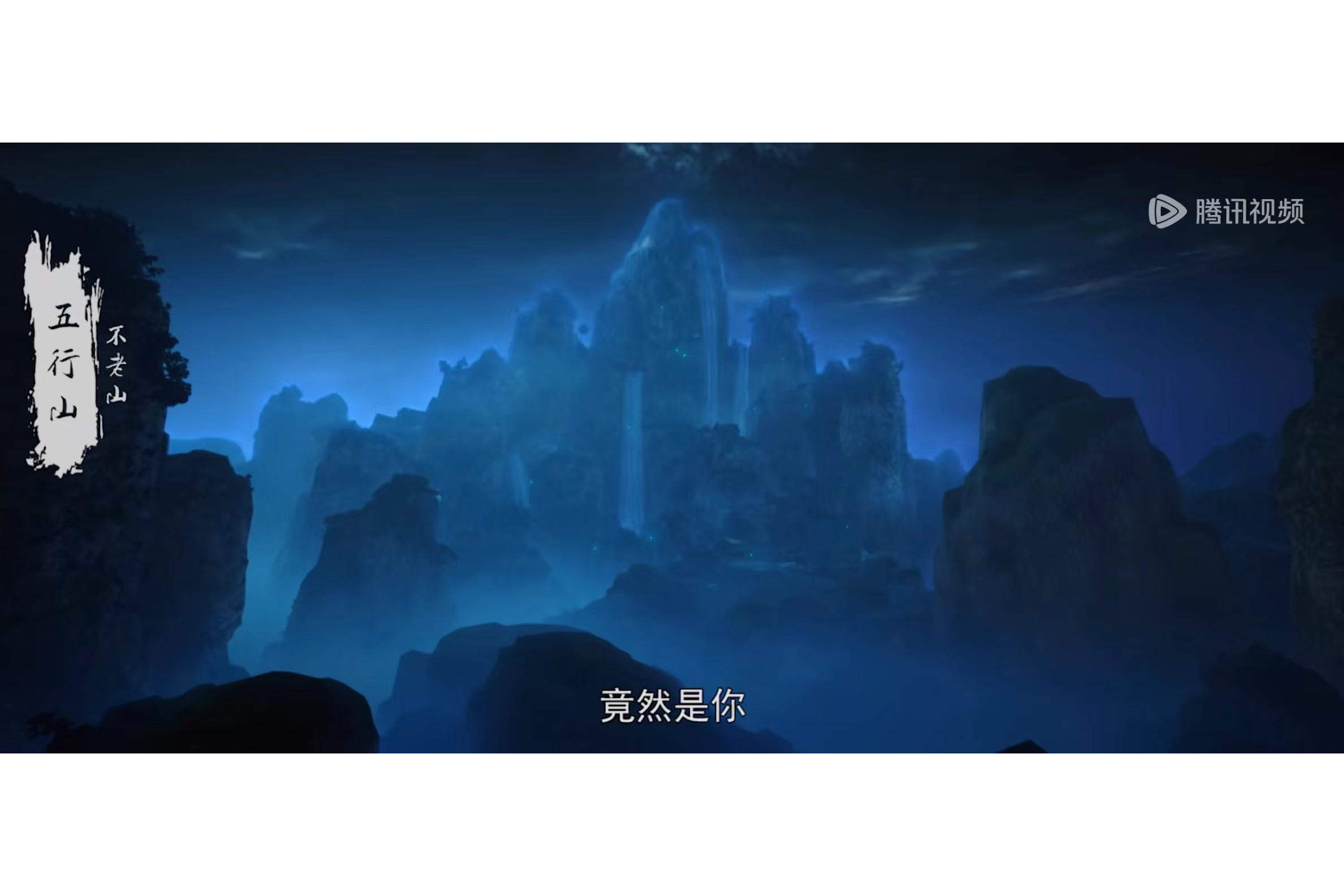1 Sun Wukong was suppressed by Buddha Tathagata at the foot of the Five Elements Mountain. This mountainfive elements mountainLiu Boqin, a resident of the Wuxing Mountain in today's Xinjiang region, is located on the border between the Tang Dynasty and Xiniu Hezhou. Liu Boqin, a resident of the Wuxing Mountain in today's Xinjiang region, mentioned that "the elders didn't know that this mountain was called the Half of Shandong in the Two Realmsfive elements mountainUnder the jurisdiction of the Tang Dynasty, the western half is the boundary of Tartar."This shows that the Wuxing Mountain is the two-boundary mountain and the dividing line between the two areas. 3 According to the description in Journey to the West, the Wuxing Mountain; Wuxing Mountain, also known as Taihang Mountain Wangmu Mountain, is an important mountain range and geographical boundary in eastern China. Its geographical location is very unique. It spans the four provinces and cities of Beijing, Hebei, Shanxi and Henan. It starts from the West Mountain of Beijing City in the north and extends south to the junction of Henan and Shanxi. Wuxing Mountain is located between Shanxi Province and the North China Plain. It connects the Shanxi Plateau in the west and the North China Plain in the east. It runs northeast and southwest and stretches for more than 400 kilometers.
Wuxing Mountain, the famous Wuzhi Mountain in Journey to the West, is also known as Liangjie Mountain. It has a unique geographical location. It is located at the boundary of Nanzhan Buzhou and Xihe Niuzhou. This famous mountain is located between the three cities of Jincheng, Xinxiang, Jiaozuo, at the junction of Shanxi and Henan provinces. Convenient transportation, within 100 kilometers of Zhengzhou Luoyang Changzhi Airport, and only 60 kilometers from Xinxiang High-speed Railway East Station. Standing on the top of Wuxing Mountain, you can overlook the Central Plains. At the foot on the left is Xinxiang's South Taihang Scenic Area. The foot on the right is the Wuxing Mountain Scenic Area in Jiaozuo's Yuntai Mountain Scenic Area; Taihang Wuzhi Mountain is also known as Wuxing Mountain. It is located at the eastern foot of Taihang Mountain, in She County, Hebei Province, only 5 kilometers away from the Urban area of She County. It is adjacent to National Highway 309 in the north. The Qinglan Expressway passes through the mountain with convenient transportation. The main peak of Wuzhi Mountain is 1283 meters above sea level and covers an area of 28 square kilometers. It is named Wuzhi Mountain because the five strange peaks look like the five fingers of Buddha. It is said that Sun Wukong was pressed under the Wuzhi Mountain to participate in Zen Wuzhi Mountain and Wuzhi Mountain surrounded by mountains. The mountains are majestic and vegetation.
The geographical location of the Five Elements Mountain and Two Realms Mountains The Five Elements Mountain, also known as the Two Realms Mountain, is an important scene in Journey to the West. According to Orion Liu Boqin,"This mountain was formerly named Five Elements Mountain, becausefive elements mountainThe change of the name "I, the King of the Tang Dynasty, conquered the West Dingguo and changed my name to Liangjie Mountain" means that Sun Wukong's five hundred years of natural disaster have ended. From then on,five elements mountainHe transformed from a Monkey King who made trouble in the celestial palace to a practitioner who learned scriptures, from the Great Sage Equaling Heaven to a follower wearing a binding curse. In Journey to the West, Sun Wukong was crushed at the foot of the Five Elements Mountain. Initially, the Five Elements Mountain was used to describe the palm of the Buddha. Sun Wukong failed to escape the palm of the Buddha when he climbed over, so he was described as the five fingers of the Buddha as a mountain. Later, Sun Wukong was pressed at the foot of the mountain by the Buddha. This mountain was called the Five Elements Mountain. In other words,"Five Elements Mountain" was used to describe the Buddha's hand, and the mountain where Sun Wukong was crushed was called the Five Elements Mountain. In the original work, it was described.
The Five Elements Mountain comes from the Great Sage who escaped from the Eight Trigrams Furnace in the seventh chapter of Journey to the West. The original text of the Calm Monkey at the foot of the Five Elements Mountain describes the Great Sage. He jumped forward and was about to jump out. The Buddha flipped his palm and pushed the monkey king out of the Western Heaven Gate. The five fingers turned into five linked mountains of gold, wood, water, fire and earth, called "Five Elements Mountain". He gently suppressed the plot of the story, Sun Wukong refined it into a "fire eye and golden eye" and then caused a stir in the celestial palace. He used the golden hoop stick to attack the enemy in the east and west. For a time, there was no god to stop it.
Five hundred years at the foot of the Five Elements Mountain
Wuzhishan is usually named after its peak shape similar to five human fingers. It is a real mountain in nature. For example, Wuzhishan in Hainan is named because of its undulating peak shape and shape like five fingers. Wuxing Mountain is not a mountain in the true sense., but a cultural symbol. In traditional China culture,"Five Elements" refer to the five basic substances or forces of gold, wood, water, fire and earth. Wuxing Mountain originates from this abstract cultural concept culture.
Pronunciation of Wuxing Mountain
1. Wuxing Mountain is located in Shanxi Province. Specific information is as follows: The geographical location Wuxing Mountain Scenic Area is located around Shuizhang Village, Duohuo Township, Lingchuan County, Jincheng City, Shanxi Province. Wuxing Mountain is located at the junction of Shanxi and Henan provinces, close to Jincheng Xinxiang and Jiaozuo cities. Transportation is relatively convenient cultural background Wuxing Mountain not only has magnificent natural scenery, but also has profound historical and cultural heritage. It is a realistic prototype of Wuxing Mountain mentioned in the China classic novel Journey to the West.
2. From the seventh chapter of Journey to the West, the Tathagata resigned the Jade Emperor and the gods, and went out of the Heavenly Gate with the two Venerable Ones. He also showed compassion and chanted the true words and called a god of the earth from the Five Elements Mountain. Together with the five directions, he lived on this mountain and was imprisoned. But when he was hungry, he drank with his melted copper juice until his disaster was over. Someone saved him. It was the demon monkey who bravely rebelled against the celestial palace, but he was suppressed by the Tathagata and drank melted copper to endure the years.
3. The origin of Wuxing Mountain Wuxing Mountain is located in the core area of China's traditional culture. Its origin is closely connected with the five elements philosophical thoughts of ancient China. Wuxing Mountain is named after the Five Elements Theory, which advocates that all things in the universe are composed of five elements: gold, wood, water, fire and earth. These five elements restrict and transform each other. The naming of Wuxing Mountain reflects the ancients 'reverence and exploration of nature. It combines the form of the mountain with the five elements, implying the meaning of mountains and nature.
4. The pronunciation of Xing is xíng Wuxing Mountain is the place name in Journey to the West. It comes from the Great Sage who escaped from the Eight Trigrams Furnace in the seventh chapter of the original work. After the Monkey at the foot of the Five Elements Mountain was conquered by the King of the Tang Dynasty, he was renamed Liangjie Mountain. The original work describes the Great Sage. He jumped and was about to jump out. He was flipped by the Buddha and pushed the monkey king out of the Western Heaven Gate. He transformed his fingers into five mountains of gold, wood, water, and earth, calling it "Five Elements Mountain", and gently pressed him down by the gods and Aganoye one by one, saying that Yang Tao is good, good, good story introduction book.
5. Wuzhi Mountain is Taihang Mountain. In Journey to the West, Wuzhi Mountain is also called Wuxing Mountain and Wuxing Mountain is another name for Taihang Mountain. In the 16th chapter of Journey to the West, it is said that this mountain was formerly named Wuxing Mountain. It was renamed Liangjie Mountain because my Tang King conquered Xidingguo. It can also be seen that Wuzhi Mountain is the mountain between the Tang Dynasty and Xidingguo, and Xidingguo refers to the Buddha's intention to subdue Sun Wukong before the Tartar King caused trouble in the celestial palace.
6. Wuxing Mountain and Wuzhi Mountain are different First of all, from the perspective of geographical location and physical existence, Wuxing Mountain and Wuzhi Mountain are two completely different places. Wuxing Mountain is located in ancient China myths and legends. It is the place where Sun Wukong was suppressed by the Buddha. It exists more in the conception of literary works than in the specific mountain range in the real world. Wuzhi Mountain is a real place name in Hainan Province and the highest mountain range in Hainan Island.
7. In the perfect world of the novel, the final ending of the Five Elements Mountain is as follows. After the Battle of Bulao Mountain, the Five Elements Mountain returned to the Upper Realm. Later, after the Battle of Diguan, Shi Hao was coerced by the remnant immortal from the Immortal Hall. Qin Changsheng helped Shi Hao use immortal blood to help the Five Elements Mountain break the seal and awaken the weapon spirit in his body to help Shi Hao. Finally, although Shi Hao was hit by the immortal breaking curse of the remnant immortal, he saved his life. After that, the Five Elements Mountain remained in the Unao Mountain until the great reckoning began.





还没有评论,来说两句吧...